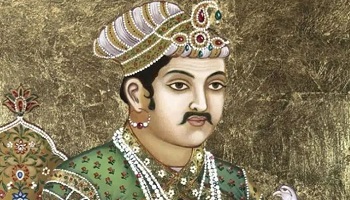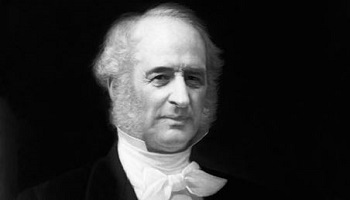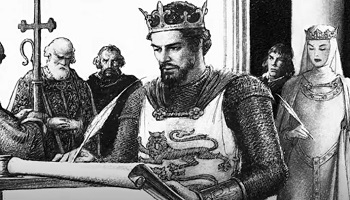
Akbar Net Worth The Wealth Behind the Mughal Throne
King Akbar, also known as Akbar the Great, is a name that resonates not only with grandeur and military might but also with immense wealth. His reign marked a golden era for the Mughal Empire, which under his leadership, expanded to become one of the wealthiest and most influential empires in the world. However, what truly set Akbar apart was not just his military conquests or political prowess, but his ability to generate and manage wealth on an unprecedented scale.
In this article, we will explore the financial legacy of Akbar the Great, analyzing the wealth that helped him build and sustain his empire, the economic systems he introduced, the treasures he accumulated, and the legacy he left behind.
The Mughal Empire’s Wealth: A Foundation for Akbar’s Prosperity
When Akbar ascended the throne in 1556, the Mughal Empire was already a powerful force, but it was under his leadership that it truly flourished. The empire expanded rapidly, encompassing modern-day India, Pakistan, Bangladesh, and Afghanistan, and its borders stretched from the Deccan Plateau in the south to the northern mountain ranges in Kashmir. With such a vast empire came enormous wealth, much of which came from three main sources: agriculture, trade, and tributes from conquered kingdoms.
Agriculture: The Backbone of Akbar’s Wealth
The Mughal Empire was predominantly agrarian, with the majority of its wealth generated through agriculture. Akbar understood that the empire’s agricultural wealth was its greatest asset. He reformed the taxation system, making it more systematic and ensuring that taxes were collected efficiently from farmers.
Akbar’s “Zabt” tax system was a revolutionary approach to revenue collection. Instead of the arbitrary taxes that had previously burdened farmers, Akbar introduced a land revenue system based on the fertility of the land. Each district was assessed according to its agricultural output, and a fixed portion of the produce was paid as tax. This system increased the state’s revenue and made the Mughal treasury one of the richest in the world.
The Role of Trade in Akbar’s Wealth
Trade played a crucial role in Akbar’s wealth accumulation. The Mughal Empire was strategically located on important trade routes connecting the East to the West. Gujarat, Bengal, and other coastal regions were bustling ports where goods like textiles, spices, and silk were exchanged with countries around the world, including the Ottoman Empire, Persia, and Southeast Asia.
Akbar made sure to protect and enhance these trade routes, ensuring a steady influx of wealth. He encouraged the establishment of caravanserais (inns for traders), built roads, and improved infrastructure, facilitating smoother trade across his empire. His policies of economic stability and military strength allowed the Mughal Empire to become a global center of commerce.
India was also a producer of luxury goods like cotton, indigo, and silk, which were highly sought after in European markets. The Empire also had access to precious resources such as gold and silver, especially from the mines in Rajasthan and the Deccan plateau, which added to Akbar’s wealth.
The Mughal Treasure: A Glimpse into the Imperial Wealth
While Akbar’s empire generated enormous wealth, his personal treasury was also equally impressive. The emperor was known to have amassed a fortune in precious gems, gold, and silver. Akbar had a vast collection of jewels, some of which were used to adorn the throne of the Mughal emperors.
The wealth of the Mughal court was legendary, with Akbar’s palace in Agra housing treasures that were described as being more magnificent than any other royal treasury of the time. It was said that the imperial treasures included diamonds, rubies, emeralds, and other precious stones, many of which were intricately worked into the robes, crowns, and ornaments of the Mughal nobility. One of the most famous jewels in the Mughal Empire was the “Koh-i-Noor,” a diamond that Akbar’s descendants would fight to possess.
Akbar’s wealth was not just in gold and jewels; it also extended to his magnificent architectural projects. He commissioned the construction of some of the most stunning architectural wonders of his time, including the Fatehpur Sikri complex, his capital city, and the Red Fort in Agra. The wealth generated by the empire was put to use in these awe-inspiring structures, which continue to be symbols of Mughal grandeur.
Akbar’s Military Campaigns and Economic Impact
King Akbar’s military prowess was directly linked to his wealth accumulation. His extensive conquests allowed him to plunder vast amounts of gold, silver, and other treasures from the regions he conquered. However, his ability to sustain and expand his wealth came from more than just the spoils of war—it was his policy of governance that ensured the prosperity of the empire.
Akbar’s military campaigns were not only focused on expanding his borders but also on ensuring the security of trade routes, securing resources, and consolidating power in key regions. The rich provinces of Gujarat, Bengal, and Punjab, for instance, provided a steady stream of income for the imperial coffers. Akbar understood that economic prosperity was essential for maintaining military power, and he carefully balanced the needs of his military with the wealth necessary to sustain it.
Moreover, Akbar was an astute diplomat who ensured that conquered territories paid regular tribute to the Mughal Empire. These tributes, in addition to the taxes collected from within the empire, added to the enormous wealth that Akbar controlled.
The Cultural and Artistic Wealth of the Mughal Empire
Under Akbar, the Mughal Empire became a center of culture and art. His court was home to a vast collection of artists, poets, and scholars, many of whom were paid handsomely for their work. Akbar’s patronage of the arts was one of the ways his wealth was expressed. The Mughal Empire became renowned for its artistic achievements, particularly in painting, architecture, and literature.
Akbar’s court produced a unique style of miniature painting that combined Persian, Indian, and Central Asian influences. The Mughal emperors were known for commissioning exquisite manuscripts, many of which were illuminated with intricate illustrations of court life, battles, and natural landscapes.
The emperor’s interest in architecture also led to the construction of monumental structures, the most famous of which was Fatehpur Sikri, Akbar’s capital city, which was designed to reflect his grandeur and wealth. The city was filled with palaces, mosques, and gardens, each more extravagant than the last, showcasing the emperor’s taste and the vast resources at his disposal.
Akbar’s Personal Wealth and Lifestyle
While Akbar’s wealth was largely tied to his empire, his personal wealth was equally remarkable. The emperor’s lifestyle reflected his immense fortune, and he was known for his taste in luxury. His court was filled with rare treasures, fine silks, and exquisite jewelry. Akbar’s personal wardrobe included garments made of the finest fabrics, often adorned with gold and gems.
Akbar was also an avid collector of rare and exotic animals, many of which were brought to his court from distant lands. The Mughal emperor had a passion for hunting and had an extensive collection of hunting equipment, including bows, arrows, and horses. His royal stables were home to some of the finest horses in the world, and his love for animals was reflected in the detailed artwork of the Mughal court, where animals were often depicted in vibrant paintings.
The Legacy of King Akbar’s Wealth
The wealth of King Akbar was not just a reflection of his material possessions; it was a symbol of the prosperity and stability that he brought to his empire. Akbar was not only a conqueror, but also a ruler who understood the importance of economic development. His wealth allowed him to fund military campaigns, patronize the arts, and build magnificent structures, all of which contributed to the enduring legacy of the Mughal Empire.
While it is impossible to calculate Akbar’s net worth in modern terms, it is clear that his wealth was staggering. His empire’s economy was robust, and the treasures he amassed were legendary. Akbar’s ability to manage and grow this wealth is a testament to his skills as an administrator and ruler. His legacy is one of not just military power, but also cultural and economic prosperity, which helped shape the history of India for centuries to come.
Today, the monuments, artworks, and records of Akbar’s reign serve as a reminder of the wealth and power that once defined the Mughal Empire. The grandeur of his rule remains etched in history, and his financial success remains one of the greatest achievements of any monarch. Akbar’s reign stands as an example of how wealth, when wisely managed, can fuel not only political power but also cultural and artistic flourishing.



